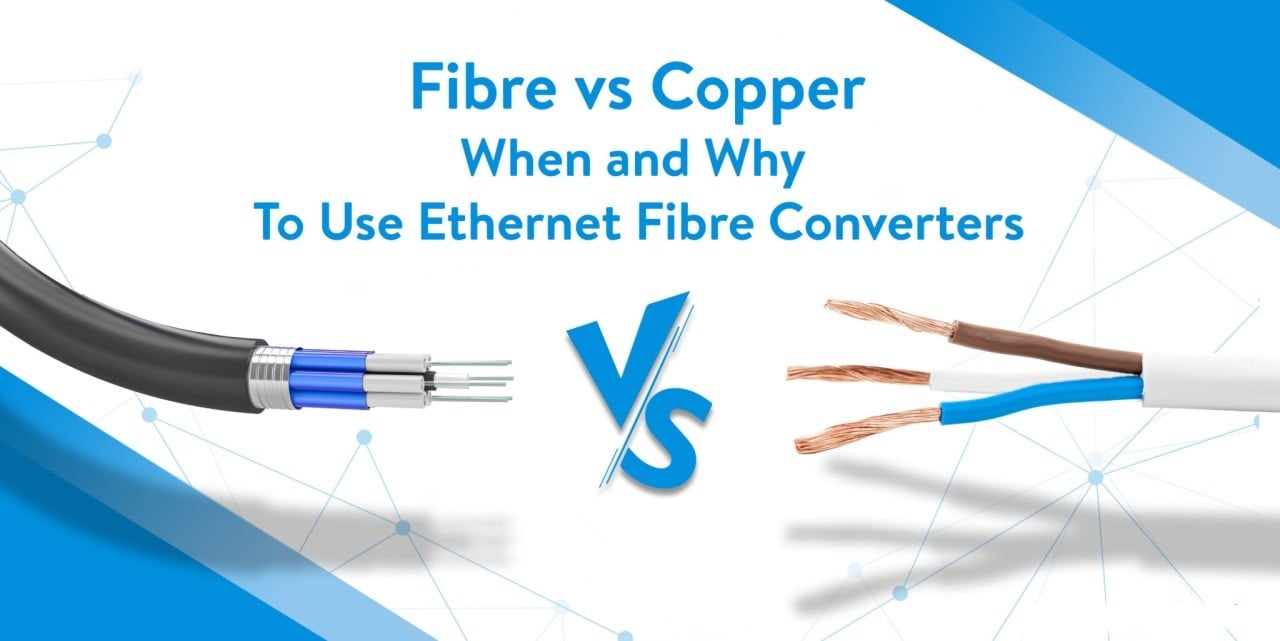In previous blogs and community discussions, Fibermart has shared a wealth of knowledge and application tips on communication technologies. But have you ever wondered what other methods could optimize network performance besides the common data transmission solutions? Today, we unveil a new choice – the fiber transceiver. Fiber transceivers not only excel in high bandwidth, long-distance, and high-reliability transmission but also solve many issues you encounter when building and upgrading communication networks. Fibermart has analyzed the comparison between fiber transceivers and traditional copper cables, helping you make the best choice for different application scenarios. Let's take a look!

Transmission Medium and Signal Characteristics
Fiber transceivers and traditional copper cables fundamentally differ in their transmission medium and signal characteristics. Fiber transceivers use fiber optics as the transmission medium, typically made of glass or plastic, transmitting data via optical signals. Fiber transmission is immune to electromagnetic interference, thus having significant advantages in signal quality and transmission distance. In contrast, traditional copper cables use copper wire as the transmission medium, transmitting electrical signals through the copper wire, which, although suitable for short-distance data transmission, is prone to electromagnetic interference.
Fiber transceivers offer extremely high transmission speeds, usually reaching Gbps levels and even up to Tbps. The large bandwidth of fiber optics makes them suitable for large data volumes and high-bandwidth applications. For instance, modern data centers and high-speed internet connections often rely on fiber technology to meet their high bandwidth demands. Traditional copper cables have relatively lower transmission speeds, typically ranging from Mbps to Gbps. Although copper cable technology has improved in recent years (such as Cat6, Cat7), its bandwidth still cannot compare to fiber optics.
Signal Attenuation and Anti-Interference Ability
In terms of signal attenuation and anti-interference ability, fiber transceivers and traditional copper cables also show significant differences. Fiber signals have lower attenuation, suitable for long-distance transmission, and are unaffected by electromagnetic and radio frequency interference. This makes fiber particularly excellent in complex electromagnetic environments such as industrial and urban areas. Traditional copper cables, on the other hand, have higher signal attenuation, only suitable for short-distance transmission, and are easily affected by electromagnetic and radio frequency interference, requiring additional shielding measures, which increases cost and complexity.
Installation and Maintenance
The installation of fiber optics is relatively complex, requiring professional equipment and technicians for operation. Fiber connection and terminal processing require precise technology and tools, such as splicing machines and fiber testers. Although the initial installation cost is high, the durability and low maintenance needs of fiber optics make them more cost-effective in long-term use. In contrast, copper cable installation is simpler, with lower tool and technical requirements, and terminal processing and connection can be completed by general technicians at a lower cost. However, copper cables have a higher maintenance frequency, especially in environments with more electromagnetic interference and physical damage.

Cost Comparison
In terms of cost, fiber optics and copper cables each have their advantages and disadvantages. The initial investment in fiber optics is higher, including fiber materials, fiber transceivers, installation, and terminal processing equipment. Although the initial investment for copper cables is lower, in large-scale deployments and long-distance transmission needs, the cost-effectiveness of copper cables is inferior to that of fiber optics.
From a long-term cost perspective, fiber optics have lower maintenance costs, longer life, and higher reliability. Despite the high initial investment, with technological advancements and large-scale production, the overall cost of fiber optics is gradually decreasing. Copper cables, on the other hand, have higher maintenance and replacement costs, especially when used in harsh environments, where maintenance expenses become more apparent.
Application Scenario Comparison
Fiber optics and copper cables perform differently in various application scenarios. Fiber optics are suitable for scenarios requiring high bandwidth, long distance, and high reliability. Typical applications include data centers, high-speed internet backbones, remote communication, and industrial automation. Fiber optics provide stable and fast data transmission in these scenarios, meeting the high demands of modern communication.
Copper cables are suitable for low bandwidth, short distance, and cost-sensitive scenarios. Typical applications include home networks, office LANs, and traditional telephone networks. Copper cables have the advantages of simple installation and low cost in these scenarios, but they are insufficient for high bandwidth and long-distance transmission.

Future Market in Different Fields
With continuous advancements in communication technology, fiber technology will become more widespread and developed. In the future, fiber transceivers will play a more important role in 5G networks, the Internet of Things (IoT), and smart cities. The demand for high bandwidth and low latency will drive innovation and application in fiber technology.
Traditional copper cables will still have a market in short-distance and low-cost applications, but as the demand for high bandwidth and long-distance transmission increases, their market share will gradually be replaced by fiber optics. In the future, copper cables will be more applied in specific low bandwidth and short-distance scenarios, such as home and small office networks.
Conclusion and Recommendations
Overall, fiber transceivers and traditional copper cables each have their advantages in different application scenarios. Fiber optics excel in scenarios requiring high bandwidth, long distance, and high reliability, while copper cables are advantageous in low-cost, short-distance, and easy-to-install scenarios. Choosing the appropriate transmission medium requires a comprehensive evaluation based on specific application needs, cost budget, and future expansion considerations.
If you are looking for a high-performance transmission device, Fiber-MART's 40G/100G fiber transceiver modules are undoubtedly your best choice. Whether for data centers, enterprise networks, or service provider networks, our transceiver modules offer versatile connectivity options. As compatible alternatives to Cisco, HP, Juniper, and other brand transceivers, Fiber-MART's products not only perform excellently but also offer high cost performance. Our transceiver modules are suitable for high bandwidth and long-distance transmission, ensuring smooth and efficient network operation, and providing diverse connectivity options for both core and distribution layers to meet different network structure needs. Strong compatibility with multiple brand devices ensures you don't have to worry about compatibility issues. Moreover, we offer a lifetime advance replacement warranty for worry-free use. Each module undergoes strict testing to ensure product quality and performance.
Visit Fiber-MART's official website now to choose the fiber transceiver module that suits you and enjoy a high-speed, reliable network experience! Our professional team is always ready to provide support and service, making your network construction and upgrades easier and more efficient.
















No comments have been posted yet.